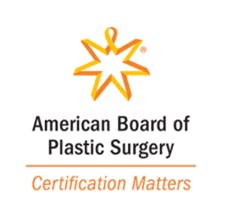FUE Hair Transplant
Hair Restoration should be unnoticeable to all but those you tell and we are proud to offer NeoGraft®, a safe, advanced, minimally invasive alternative to the strip method. Dr. Cappuccino and his highly trained and experienced team achieve optimal, natural-looking results with this technology. We offer the Follicular Unit Extraction (FUE) method utilizing the NeoGraft® Automated Hair Transplantation system. The FUE method of hair transplantation removes individual hair follicles from the scalp in their naturally occurring groupings of about one to four hairs which are then placed in the areas of the scalp where balding has occurred.
Follicular unit extraction (FUE) is the newest method of hair transplantation. It takes hair grafts from the back of the head (where hair is genetically programmed not to fall out) so they can be placed in thinning or balding areas. Compared to the more common "strip" or follicular unit transplantation (FUT) surgery, the FUE procedure maximizes the use of the finite amount of donor hair available. FUE can be performed with a local anesthetic and results in little bleeding.
When performed manually, FUE can be a time-consuming, tedious and expensive process. It can also be a difficult procedure for physicians to master, so most continue to rely on the faster "strip" method. The drawback with both manual FUE and the strip method is that they require extensive handling of the grafts, and the survival rate of donor grafts decreases the more they are handled. The NeoGraft® device eliminates the problems associated with manual FUE hair restoration. It makes the process simpler, quicker, and more effective than either manual FUE or "strip" surgery, leading to the best possible aesthetic result.
Benefits of the FUE Method (NeoGraft®):
The NeoGraft® Automated FUE is also a useful procedure to fix visible linear scars from previous “strip” surgeries. FUE can be used to ‘fill in’ or camouflage those old scars by transplanting new follicles into the area. Other main benefits include:
- FUE hair transplant is a very safe, minimally invasive, relatively minor procedure
- Minimal bleeding and fewer complications than with the “strip” method
- The procedure is performed with local anesthetic and no intravenous or intra-muscular sedation is required
- Patients experience minimal discomfort, no scalpel incision, no sutures, no linear scar, and quick recovery times






















